Sie müssen eingeloggt sein
Teleskopabdeckungen – was sind sie und warum sind sie wichtig?

Teleskopabdeckungen sind schützende Elemente, die in Industriemaschinen verwendet werden, um bewegliche Teile vor Verunreinigungen, mechanischen Beschädigungen und vorzeitigem Verschleiß zu schützen. Dank ihres Designs schützen sie effektiv Führungen, Gewindespindeln und andere Komponenten, die für den präzisen Betrieb der Geräte verantwortlich sind.
Teleskopabdeckungen – Was sind sie und warum sind sie wichtig?
Der Einsatz von Teleskopabdeckungen ist in der Metallverarbeitungsindustrie, der CNC-Produktion und vielen anderen Bereichen, in denen Maschinen unter harten Bedingungen arbeiten müssen, unerlässlich. Teleskopabdeckungen verlängern nicht nur die Lebensdauer von Maschinen, sondern verringern auch das Risiko von Ausfällen, was zu niedrigeren Wartungskosten und einer höheren Produktionseffizienz führt.
Teleskopabdeckungen in Industriemaschinen
Teleskopabdeckungen spielen eine wichtige Rolle beim Schutz von Maschinenmechanismen vor äußeren Einflüssen. Ihre Aufgaben sind:
Schutz vor Staub, Spänen und Flüssigkeiten – bei Bearbeitungsprozessen entstehen feine Späne und Kühlflüssigkeiten, die den Betrieb von Maschinen negativ beeinflussen können. Teleskopabdeckungen blockieren effektiv den Zugang dieser Verunreinigungen.
Verhinderung mechanischer Beschädigungen an Führungen – Industriemaschinen arbeiten mit hoher Präzision, und selbst kleine Beschädigungen an einer Führung können die Bearbeitungsqualität beeinträchtigen. Teleskopabdeckungen minimieren dieses Risiko.
Reduzierung der Betriebskosten – Der Schutz von Maschinenkomponenten bedeutet weniger häufige Wartung und Austausch, was die Wartungskosten und Ausfallzeiten reduziert.
Erhöhung der Sicherheit des Bedieners – Gut gestaltete Teleskopabdeckungen verhindern den unbeabsichtigten Kontakt zwischen Arbeitern und beweglichen Maschinenteilen und erhöhen so die Arbeitssicherheit.
Materialien, die bei der Produktion von Teleskopabdeckungen verwendet werden
Teleskopabdeckungen können aus verschiedenen Materialien hergestellt werden, am häufigsten werden jedoch folgende verwendet:
Edelstahl – Besonders empfohlen in Umgebungen, in denen eine große Menge Schmier- und Kühlflüssigkeiten vorhanden ist. Edelstahl ist korrosionsbeständig und sorgt für eine lange Lebensdauer, auch unter rauen Bedingungen.
Gusseisen – Weniger häufig verwendet, aber in bestimmten Anwendungen immer noch angewendet. Es ist schwerer als Stahl, bietet jedoch hohe Abriebfestigkeit und mechanische Stabilität.
Aluminiumlegierungen und andere Metalle – In einigen Fällen werden Leichtmetalle verwendet, insbesondere wenn die Masse der Abdeckung für die Dynamik der Maschinenbewegung wichtig ist.
Die Wahl des Materials hängt von den Arbeitsbedingungen der Maschine und der Umgebung ab, in der die Abdeckung verwendet wird.
Zubehör, das den ordnungsgemäßen Betrieb sicherstellt
Damit Teleskopabdeckungen ihre Funktion effektiv erfüllen, sind sie oft mit zusätzlichen Komponenten ausgestattet, die ihre Haltbarkeit und Betriebsleistung verbessern. Die wichtigsten Zubehörteile sind:
- Gleitpads – Reduzieren die Reibung und gewährleisten eine reibungslose Bewegung der Abdeckung.
- Rollen und Führungen – Ermöglichen eine präzise und leichte Bewegung der Abdeckungen, was besonders wichtig für schnelle Maschinen ist.
- Stoßdämpfer – Reduzieren die Aufprallkraft zwischen den Segmenten der Abdeckung und verlängern deren Lebensdauer.
- Ölschaber und Wischer – Entfernen überschüssiges Kühlmittel, Öl und Verunreinigungen von den Führungen und verhindern deren Eindringen in das Innere der Abdeckung.
Dank der richtigen Auswahl von Materialien und Zubehör können Teleskopabdeckungen zuverlässig lange arbeiten und effektiv Maschinenkomponenten schützen und deren Zuverlässigkeit gewährleisten.
Produktion von Teleskopabdeckungen
Die Produktion von Teleskopabdeckungen ist ein Prozess, der einen präzisen Ansatz und eine vollständige Anpassung an die spezifischen Bedürfnisse der Kunden erfordert. Jede Maschine, ihre Arbeitsbedingungen und Anforderungen sind unterschiedlich, daher muss das Design und die Produktion von Abdeckungen flexibel sein, um diesen individuellen Erwartungen gerecht zu werden. Unternehmen, die sich mit der Produktion von Teleskopabdeckungen beschäftigen, wie Metal Gennari, reagieren auf diese Bedürfnisse, indem sie "maßgeschneiderte" Lösungen schaffen und die höchste Qualität der Ausführung gewährleisten.
Jede Teleskopabdeckung wird mit den Spezifikationen der Maschine, in der sie verwendet wird, im Hinterkopf entworfen. Der Designprozess beginnt mit einer gründlichen Analyse der Kundenanforderungen, der Arbeitsbedingungen der Maschine und etwaiger spezieller Bedürfnisse, wie zum Beispiel der Bewegungsgeschwindigkeit oder der Anwesenheit von Schmier- und Kühlstoffen. Auf dieser Grundlage werden Lösungen entwickelt, die nicht nur effizient, sondern auch langlebig sind.
Designer passen die Form, die Abmessungen und die Materialien der Abdeckungen an die spezifischen Anwendungsanforderungen an. Mit diesem individualisierten Ansatz werden Teleskopabdeckungen zur optimalen Lösung für den Schutz von Maschinen, während gleichzeitig die Betriebskosten minimiert und Sicherheit sowie Produktionseffizienz maximiert werden.
Die Bedeutung von Präzision und Materialqualität
Die Materialqualität der in der Produktion von Teleskopabdeckungen verwendeten Materialien ist entscheidend für deren Leistung und Langlebigkeit. Hochwertige Materialien bieten nicht nur besseren Schutz vor mechanischen Beschädigungen und Verunreinigungen, sondern erhöhen auch die Widerstandsfähigkeit gegen Korrosion, Abrieb und andere harte Arbeitsbedingungen.
Im Fall von großen Industriemaschinen, bei denen die Abdeckungen unter schwierigen Bedingungen (z. B. bei hohen Gleitgeschwindigkeiten oder intensiver Nutzung von Schmierflüssigkeiten) arbeiten müssen, ist es besonders wichtig, Materialien zu verwenden, die korrosions- und hochtemperaturbeständig sind. Aus diesem Grund ist Edelstahl eines der am häufigsten gewählten Materialien für die Produktion von Teleskopabdeckungen. Zudem garantiert eine präzise Fertigung und eine ordnungsgemäße Materialbearbeitung die Zuverlässigkeit der Abdeckung über einen langen Zeitraum.
Beispiele für Teleskopabdeckungen aus Edelstahl
Edelstahl ist ein ideales Material für Teleskopabdeckungen, die in Umgebungen mit hoher Präsenz von Schmier- und Kühlflüssigkeiten arbeiten müssen. Dank seiner Korrosionsbeständigkeit sorgt Edelstahl für die Langlebigkeit der Abdeckungen, selbst unter schwierigen industriellen Bedingungen. Metal Gennari, als Hersteller von Teleskopabdeckungen, bietet Lösungen aus diesem Material an, die an die Kundenanforderungen in Bezug auf Form, Größe und Arbeitsbedingungen der Maschine angepasst sind.
Ein Beispiel könnte eine Edelstahlteleskopabdeckung für eine Bearbeitungsmaschine sein, die in einer hochfeuchten Umgebung mit intensiver Nutzung von Kühlmittel arbeitet. Durch die Verwendung von Edelstahl gewährleistet die Abdeckung Schutz vor Korrosion, und ihr Design ist für hohe Lasten und häufige Bewegungen geeignet. Teleskopabdeckungen aus Edelstahl sind außerdem leicht zu reinigen und zu warten, was zu ihrer Langlebigkeit und Zuverlässigkeit beiträgt.
Reparatur von Teleskopabdeckungen
Die Reparatur von Teleskopabdeckungen ist ein wichtiger Prozess, der ihre Lebensdauer verlängert und Maschinen in einwandfreiem Zustand hält, wodurch das Risiko von Ausfällen und damit verbundenen Kosten minimiert wird. Eine professionelle Diagnose und fachgerechte Reparaturen sind der Schlüssel zur Aufrechterhaltung der hohen Effizienz der Abdeckungen, insbesondere in einer industriellen Umgebung, in der Teleskopabdeckungen eine wesentliche Rolle im Maschinenschutz spielen.
Diagnose und Umfang möglicher Reparaturen
Der Reparaturprozess von Teleskopabdeckungen beginnt mit einer gründlichen Diagnose, die hilft, Schäden zu identifizieren und den technischen Zustand der Abdeckung zu bewerten. Experten in Unternehmen, die sich auf diese Reparaturen spezialisieren, wie Metal Gennari, führen eine detaillierte Inspektion durch, um zu verstehen, welche Komponenten der Abdeckung repariert oder ersetzt werden müssen.
Je nach Abnutzungsgrad und Art des Schadens kann die Reparatur verschiedene Aufgaben umfassen. Mechanische Beschädigungen oder Materialverschleiß, wie sie durch Reibung entstehen, erfordern möglicherweise den Austausch von Dichtungen, Rollen oder Stoßdämpfern. Andererseits können Probleme, die durch Reibung oder Verschleiß aufgrund von Schmierstoffen verursacht werden, den Austausch von Schutzelementen wie Ölschabern oder Führungen erforderlich machen. Eine umfassende Reparatur stellt die volle Funktionsfähigkeit der Abdeckung wieder her.
Welche Komponenten können in Teleskopabdeckungen ersetzt werden?
Bei der Reparatur von Teleskopabdeckungen können viele wichtige Komponenten, die während des Betriebs anfällig für Beschädigungen sind, ersetzt werden. Hier sind einige davon:
• Ölschaber: Teleskopabdeckungen, die mit Schabern (sowohl aus Messing als auch PVC) ausgestattet sind, helfen, überschüssiges Öl zu entfernen, um seine Ansammlung und Ablagerung zu verhindern. Der Austausch abgenutzter Schaber ist eine der häufigsten Reparaturaufgaben.
• Rollen und Stoßdämpfer: Diese Komponenten sind für die reibungslose Bewegung der Abdeckung verantwortlich. Mit der Zeit können sie abnutzen, und deren Austausch stellt die optimale Funktionalität der Teleskopabdeckung wieder her.
• Führungen und andere Zubehörteile: Beschädigte Führungen oder andere strukturelle Komponenten können ebenfalls durch Ersatz repariert werden. Eine ordnungsgemäße Führung der Teleskopkomponenten ist entscheidend für die Effizienz der Abdeckung.
Die Reparatur von Teleskopabdeckungen ermöglicht eine präzise Anpassung der Komponenten, abhängig vom Abnutzungsgrad, und gewährleistet deren langanhaltenden und zuverlässigen Betrieb.
Tests und schnelle Lieferung nach der Reparatur
Nach Abschluss der Reparatur werden alle Teleskopabdeckungen gründlich getestet, um ihre Funktionalität und Haltbarkeit zu überprüfen. Unternehmen wie Metal Gennari verwenden Simulatoren und Prüfstände, die es ermöglichen, Leistungstests unter Bedingungen durchzuführen, die den realen Betriebsbedingungen nahekommen. So wird sichergestellt, dass mögliche Unstimmigkeiten erkannt und die reparierten Abdeckungen einwandfrei funktionieren.
Nach Abschluss der Tests ist die reparierte Teleskopabdeckung zur schnellen Lieferung an den Kunden bereit. Die Reparaturzeit beträgt in vielen Fällen nur wenige Tage, was hilft, Ausfallzeiten zu minimieren und die Kontinuität der Industriemaschinen aufrechtzuerhalten. Eine schnelle Lieferung ist ein wesentlicher Bestandteil des umfassenden Service, der in Situationen, in denen Zeit entscheidend ist, besonders wertvoll ist.
Besondere Anwendungen von Teleskopabdeckungen
Teleskopabdeckungen sind in vielen Industriezweigen unverzichtbar, und ihre Rolle besteht nicht nur darin, Maschinen vor Verunreinigungen zu schützen, sondern auch deren langfristigen, störungsfreien Betrieb zu gewährleisten. Da Werkzeugmaschinen und Industriegeräte immer fortschrittlicher werden, entstehen neue Anforderungen an das Design von Teleskopabdeckungen. Die Anpassung dieser Abdeckungen an neue Technologien ist entscheidend, um ihre Effizienz in sich dynamisch verändernden Arbeitsbedingungen zu erhalten.
Wie man Abdeckungen an moderne Werkzeugmaschinen anpasst
Moderne Werkzeugmaschinen erfordern häufig Teleskopabdeckungen, die höhere Anforderungen in Bezug auf Arbeitsgeschwindigkeit und spezifische Betriebsbedingungen erfüllen. Daher müssen Teleskopabdeckungen an Parameter wie unterschiedliche Bewegungsgeschwindigkeiten, große Mengen an Kühlflüssigkeiten und komplexe Vorgänge, die in Werkzeugmaschinen auftreten, angepasst werden.
Die Gestaltung von Teleskopabdeckungen für moderne Maschinen beginnt mit einem gründlichen Verständnis der spezifischen Bedürfnisse des Kunden. Es ist notwendig, die Geschwindigkeit der Maschinenbewegungen, den Kontakt mit Schmierstoffen und die Materialien zu berücksichtigen, die optimalen Schutz bieten. Aus diesem Grund werden Materialien wie Edelstahl, das für seine hohe Beständigkeit gegen Öle und Chemikalien bekannt ist, häufig verwendet. Designer integrieren auch häufig innovative Lösungen wie zusätzliche Zubehörteile, die die Reibung verringern und die Bewegungsreibung verbessern.
Lösungen für große Mengen an Flüssigkeiten und hohe Geschwindigkeiten
In vielen modernen Werkzeugmaschinen kann die Anwesenheit von großen Mengen Schmier- oder Kühlflüssigkeiten zusätzliche Herausforderungen darstellen. Obwohl diese Flüssigkeiten im Bearbeitungsprozess unverzichtbar sind, können sie bei unsachgemäßer Kontrolle zu vorzeitigem Verschleiß der Teleskopabdeckungen führen. Um dies zu verhindern, wird bei der Gestaltung von Teleskopabdeckungen auf spezielle Materialien und Zubehörteile geachtet.
Teleskopabdeckungen, die für solche Bedingungen entwickelt wurden, bestehen typischerweise aus Edelstahl, der Langlebigkeit und Korrosionsbeständigkeit gewährleistet. In Umgebungen, in denen große Mengen an Flüssigkeit vorhanden sind, ist es ebenfalls wichtig, Ölschaber (in Messing- oder PVC-Versionen) zu verwenden, um eine übermäßige Ölansammlung zu verhindern. Mit diesen Lösungen schützen Teleskopabdeckungen nicht nur die Maschine vor Beschädigungen, sondern gewährleisten auch eine langfristige und effiziente Nutzung unter harten Bedingungen.
Bei hohen Gleitgeschwindigkeiten müssen Teleskopabdeckungen so konzipiert werden, dass das Risiko von Beschädigungen minimiert wird. In solchen Situationen werden spezielle stoßdämpfende Zubehörteile in die Abdeckungen eingebaut, um Aufprallkräfte zwischen den Komponenten zu vermeiden und deren Haltbarkeit zu gewährleisten.
Beispiele für spezielle Teleskopführungen
Für Hochgeschwindigkeitsbearbeitung ist es notwendig, spezialisierte Designlösungen wie doppelte Pantographen oder fortschrittlichere Teleskopführungen zu verwenden. Ein Beispiel für eine solche Lösung ist eine Teleskopführung für eine Parallel-Drehmaschine, die mit einem doppelten Pantographen und fünf Reihen von Messingführungen ausgestattet ist, die ineinander greifen. Diese Art von Lösung wird in Situationen verwendet, in denen eine hohe Gleitgeschwindigkeit vorhanden ist, da die Pantographen und Führungen ein gleichmäßiges Öffnen der Elemente gewährleisten, wodurch das Risiko von Beschädigungen oder Blockierungen verringert wird. Mit solchen Systemen ist es möglich, größere Konsistenz der Teleskopabdeckungs-Komponenten zu erreichen und ihre Widerstandsfähigkeit gegenüber Schäden zu erhöhen, was zu einer längeren Lebensdauer der Abdeckung führt.
Ähnliche innovative Lösungen werden in technischen Büros entwickelt, die maßgeschneiderte Teleskopabdeckungen für außergewöhnliche Produktionsbedingungen entwerfen. Dank dieser Lösungen können Teleskopabdeckungen die Anforderungen moderner Werkzeugmaschinen erfüllen, selbst unter harten Bedingungen, die große Mengen an Flüssigkeiten oder Hochgeschwindigkeitsbewegungen betreffen.
Hochgeschwindigkeits-Teleskopabdeckungen
Teleskopabdeckungen, die in Hochgeschwindigkeitsmaschinen arbeiten, sind ein entscheidendes Element, um den langfristigen und störungsfreien Betrieb von Maschinen zu gewährleisten. Je nach Geschwindigkeit der Bewegungen der Maschinenelemente muss das Design der Abdeckung an spezifische Anforderungen angepasst werden, um das Risiko von Schäden zu minimieren, die Haltbarkeit zu erhöhen und eine gleichmäßige Bewegung zu gewährleisten.
Wie beeinflusst die Gleitgeschwindigkeit das Design der Abdeckung?
Die Gleitgeschwindigkeit der Elemente in einer Werkzeugmaschine hat Einfluss auf das Design der Teleskopabdeckung. In Maschinen, bei denen die Gleitgeschwindigkeit 15 m/min nicht überschreitet, erfordern Teleskopabdeckungen keine speziellen Dämpfungsmaßnahmen, wodurch ihr Design einfacher und standardmäßiger wird. Bei höheren Geschwindigkeiten, insbesondere wenn diese Werte zwischen 15 und 30 m/min liegen, ist es jedoch notwendig, spezielle Dämpfungselemente zu verwenden, um Stöße zwischen den einzelnen Abschnitten der Abdeckung zu verhindern.
Durch den Einsatz von Lösungen wie Stoßdämpfern, Dichtungen und geeigneten Zubehörteilen können Teleskopabdeckungen in anspruchsvolleren Bedingungen betrieben werden, was ihre Lebensdauer verlängert und eine stabile Leistung gewährleistet. Für höhere Geschwindigkeiten (über 30 m/min) muss das Abdeckungsdesign auch Elemente enthalten, die eine gleichmäßige Öffnung der Komponenten ermöglichen und verhindern, dass diese stoppen.
Lösungen für Abdeckungen, die mit Geschwindigkeiten von 15–60 m/min arbeiten
Teleskopabdeckungen, die mit Geschwindigkeiten von 15 bis 60 m/min arbeiten, müssen mit den spezifischen Bedürfnissen solcher Maschinen im Hinterkopf entwickelt werden. Für Geschwindigkeiten zwischen 15 und 30 m/min, wie bereits erwähnt, ist es wichtig, Dämpfungssysteme zu verwenden, die die Aufprallkraft zwischen den Abdeckungsabschnitten reduzieren. In solchen Designs ist es entscheidend, dass die Teleskopelemente ordnungsgemäß ausbalanciert sind und die Materialien, die in ihrer Konstruktion verwendet werden, langlebig genug sind, um intensiven Bewegungen und dem Kontakt mit Schmierflüssigkeiten standzuhalten, die in solchen Maschinen auftreten können.
Für Geschwindigkeiten zwischen 30 und 60 m/min müssen Designer fortschrittlichere Mechanismen wie Pantographen einsetzen, die das Stoppen der Abdeckung verhindern und eine gleichmäßige Öffnung der Komponenten gewährleisten. Darüber hinaus hilft der Einsatz spezieller Führungen und ineinandergreifender mechanischer Elemente, die Stabilität der Abdeckung zu bewahren und das Risiko einer Blockierung oder des Steckenbleibens zu verringern.
Die Bedeutung von Pantographen und ineinandergreifenden Führungen
Im Kontext von Teleskopabdeckungen, die mit hohen Geschwindigkeiten arbeiten, spielen Pantographen und ineinandergreifende Führungen eine entscheidende Rolle bei der Gewährleistung einer gleichmäßigen und stabilen Bewegung. Der Pantograph, der oben auf der Abdeckung montiert ist, arbeitet nach dem Prinzip einer "Konzertina"-Bewegung, die ein Stoppen verhindert und eine gleichmäßige Öffnung der Abdeckungsbestandteile sicherstellt. Dieser Mechanismus ist besonders wichtig bei Maschinen, die mit höheren Geschwindigkeiten arbeiten, bei denen die Bewegungsstabilität entscheidend ist.
Inzwischen stärken ineinandergreifende Messingführungen, wie sie in speziellen Teleskopführungen für Parallel-Drehmaschinen verwendet werden, die gesamte Struktur und verhindern Blockierungen, wodurch eine bessere Konsistenz zwischen den Abdeckungsabschnitten gewährleistet wird. Durch die Verwendung dieser Lösung können Teleskopabdeckungen, die mit hohen Geschwindigkeiten arbeiten, langanhaltende, intensive Bewegungen aushalten, ohne Gefahr von mechanischen Schäden.
Die kombinierte Verwendung von Pantographen und ineinandergreifenden Führungen macht Teleskopabdeckungen widerstandsfähiger gegenüber Stößen und verringert das Risiko von Schäden, wodurch die Leistung und Lebensdauer des gesamten Systems erheblich verbessert wird.




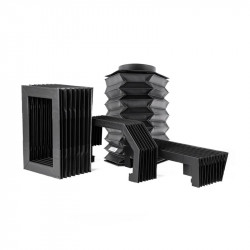
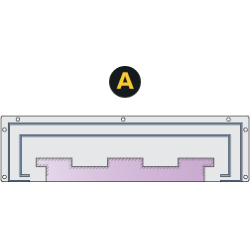
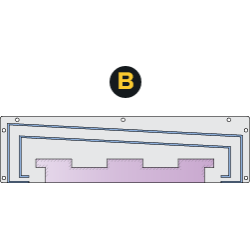
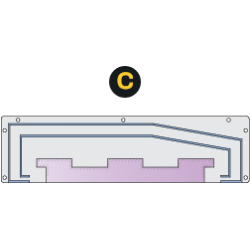
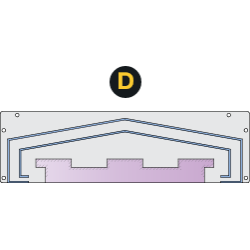
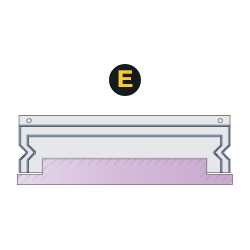
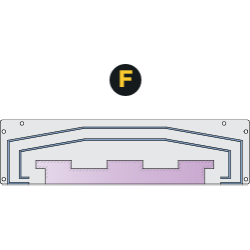
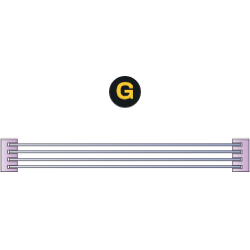
Hinterlassen Sie einen Kommentar